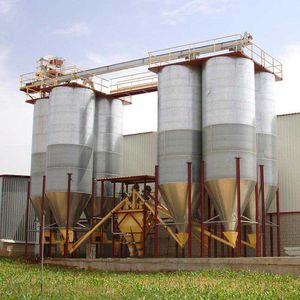
Grain silo Silos de chargement de camionsfor liquidsfor fertilizerfor food products
Add to favorites
Compare this product
Characteristics
- Application
- for grain, for liquids, for fertilizer, for food products, for minerals
- Material
- steel, galvanised steel, stainless steel
- Form
- round, discharge, square, rectangular
- Other characteristic
- corrugated, modular, with screw conveyor, UV-resistant, smooth-wall
Description
The most economical and quickest way to load bulk materials into a truck is to use a battery of silos suspended on a structure. By placing the truck under the corresponding silo and opening its lower valve, the box is filled in a few minutes and the truck is ready for transport. Flours and aggregates can be loaded immediately and cleanly without energy expenditure.
Silos for truck loading can be manufactured with a square or cylindrical structure, which has advantages and disadvantages. In any case, we recommend a welded construction to avoid the penetration of water and moisture, which causes residues and fungi to appear inside the silos.
The square construction maximizes the storage volume in relation to the occupied surface. However, we do not recommend this silo shape for sticky products that can easily compact in corners and nooks.
The cylindrical construction ensures greater internal cleanliness. In addition, it is generally the most economical form of silo to build. However, the volume stored in relation to the occupied surface area is much smaller than in the case of a square silo. These silo batteries are generally equipped with ladders and walkways for silo valve management.
These valves are generally manufactured with manual actuation, but they can also be equipped with pneumatic or mechanical actuation and thus be controlled by remote control.
*Prices are pre-tax. They exclude delivery charges and customs duties and do not include additional charges for installation or activation options. Prices are indicative only and may vary by country, with changes to the cost of raw materials and exchange rates.



